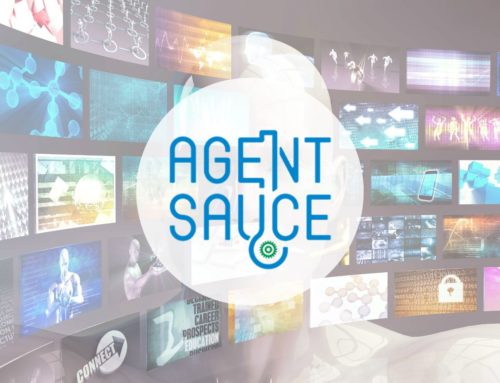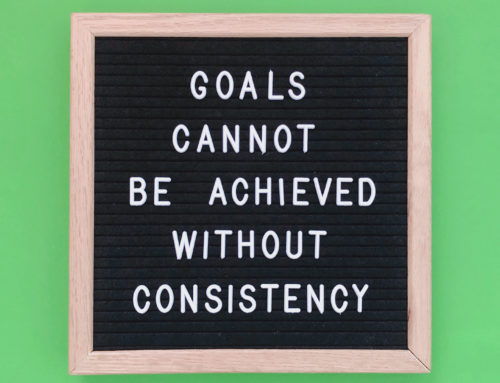Real Estate Photography – Getting the most out of it.
In this podcast we discuss tips and tricks to making great photos for your real estate marketing and why real estate photography is so important to growing your real estate business.
Real Estate Photography Take Aways
- Clean Up! – make sure that the area that you are photographing is clean and organized.
- Social Media – Real estate social media marketing posts with pictures gets more interaction than posts without pictures. Make sure that you use photos that are the right size for a particular media.
- Great pictures make the ad – A great looking photo will get a better response!
Real Estate Photography Transcription
Adam Small: Good afternoon, this is Adam Small and this is Agent Sauce Real Estate Marketing Podcast. With me today as always, is Doug Karr.
Douglas Karr: Hello sir.
Adam Small: And we’ve got intern Austin.
Austin Day: Hello.
Adam Small: How you guys doing today?
Austin Day: I’m great, how are you? (laughing)
Adam Small: I’m a robot. How are you today? (laughing)
How you doing today, Doug?
Douglas Karr: I’m ready to go.
Adam Small: Ready to go, ready to leave?
Douglas Karr: No.
Adam Small: Oh, you’re ready to go over podcast?
Douglas Karr: Podcast, yeah. I love podcast.
Adam Small: Okay cool.
Hey listen, today I was thinking Real Estate Photography and imagery for real estate would be a really good topic, something to talk about and kind of want to preface this a little bit. We are no experts in how to take a photograph but from a marketing perspective, I think we’ve got a lot to talk about.
Douglas Karr: Yeah, I agree.
Adam Small: So you agree you’re not an expert in Real Estate Photography?
Douglas Karr: Yes.
Adam Small: Okay. How about you Austin? Are you a Real Estate Photography expert?
Austin Day: Definitely not an expert.
Adam Small: Well you know you had that photography class in college here right?
Austin Day: Yeah, just recently.
Adam Small: But still not an expert?
Austin Day: Yeah, still not an expert. (laughs)
Adam Small: Okay.
Douglas Karr: You know what, I would say this. I don’t know that photography is like one of those things that you can just go learn. Like you can learn the navigation and menus of a … but you still have to have kind of a creative eye. Especially with Real Estate Photography.
Austin Day: And it’s really a skill that you have to practice.
Adam Small: It’s a funny thing because there is a lot of technical stuff behind it, you know, with ISO and shutter speed and depth of field and all that. You can learn the technical side, you can say well if I do this, then that’s gonna impact the image like this. Doesn’t mean you’re still going to end up with a good image.
Douglas Karr: Yeah, right right.
Adam Small: As much science as there is behind it, and there is truly a lot, there’s still a lot of art to it.
Austin Day: Totally agree.
Adam Small: Without that art, it just doesn’t matter, you know, you might as well be a police officer taking pictures of the crime screen. You know, because really all your doing is collecting data, right? As opposed to creating something artful, right?
Douglas Karr: Wow, we went dark fast. (laughs)
Adam Small: Well you know me. (laughs) Alright, so realtors can use Real Estate Photography in a lot of places, right? You’ve got websites, which is obvious, you’ve got their profile, their portrait photos, which they plaster everything that they market with themselves because it’s part of their brand and then you’ve got virtual tour photos for the listings themselves, as well as even social media, which is another location from a marketing perspective in which to use Real Estate Photography. Those are probably the big ones. You know obviously print and that sort of stuff comes into play as well but I think most of what you’re seeing these days from real estate agents is digital, email marketing, stuff like that. Let’s just talk about portrait photos are pretty standard, you know, you’ve got a professional photographer taking those, so let’s not talk about those. Let’s talk about virtual tour photos for a moment.
Douglas Karr: Oh, oh nice.
Adam Small: Virtual tour photos, you know, those are the photos of the listing, agents can take those themselves. A lot of agents do and a lot of agents pay for those to be taken as well, you know they pay a professional photographer. A lot of times what they’ll do is, now they’re getting into not just panoramic but 360 type photos as well as aerial photos. Aerial photos are somewhat new, they’re drone footage and that sort of thing. Doug, what do you see coming with that?
Douglas Karr: Well it goes back to quality again, right? When you see a really great, well lit photograph that has rich colors in it and everything else, your eyes are really drawn to it. What I see a lot that concerns me is that real estate agents take photos to take photos, but they’re not thinking about whether it’s eye catching or not. The angles that they’re taking the photos at, the lighting that they’re using, you know. If its drones or aerial, it’s the camera, it might be a cheapo. A lot of the problems that I see is that a good Real Estate Photography is worth the investment.
Adam Small: Right.
Douglas Karr: And a crappy photo, you don’t even pay attention to, you know.
Adam Small: You just skim right through it. Right, right.
Douglas Karr: That’s probably the biggest thing I see is. Whenever we get clients, bring in professional Real Estate Photography, everything changes. The whole site pops better and everything really stands out.
Adam Small: And it just adds a nice layer of polish.
Douglas Karr: Yeah, and then when people share it on social media, it’s really much more attractive and then it’s engaging too. Especially if it’s a photo of you or something because then people see you and they’re not seeing the 1984 heavily photoshopped version of you. (laughing) You know, they see you and it’s an instant like, wow cool, that’s the guy from the photo or that’s the lady from the photo.
Adam Small: You know one of the things I see with virtual tour photos, you’re really talking about composition of the photos, making sure that what’s in Real Estate Photography
Douglas Karr: Whoa, that’s one of those big words.
Adam Small: High-dollar word there, right? But you are, you’re talking about composition. It’s angling it and setting it so that everything looks just right and really displays the room well, right?
Douglas Karr: Right.
Adam Small: One of the things I see in virtual tour photos, and I see a lot of them because we offer virtual tours as one of our services, is really, it comes down to what you would call poor composition. I would call it poor judgment because it’s people taking pictures of the bathroom with the toilet seat up and spots all over the mirror or holes in the roof and that sort of thing. Where really and truly the intent of any sort of photo of a listing from a virtual tour perspective, the intent is really just to show enough to get the person interested in the listing and then have them drive out and look at it.
What will happen is you put all these photos of this tour out there and really if you put too many out, what happens is you’re allowing somebody to find something wrong with the home and say I’m not gonna overlook that, so I’m not even going to look at the house.
You know they find a problem with it and they move on, whereas if they came out and they toured it in person, they might be there and going, “Look I really love this house, there’s a problem with the roof here or whatever it is, but I can overlook that or you can get that fixed and then I can buy the house.” So I think the photography, not only the elements of it, the composition and all but also the judgements of what to put out there to entice somebody to come in is just as important as what you’re actually taking.
Douglas Karr: And I think if you looked up, it’s not the topic today but like those staging companies, right? That’s exactly what they’re working on is they want to stage your house and make it look in such a way that it’s really appealing.
Adam Small: Right, they’re composing the house so that it’s most possible to appeal to a buyer. So this could be your home, right?
Beyond virtual tours, social media is becoming really heavy. I read somewhere that there’s more photos uploaded in a minute or an hour or something that have ever been taken in the entire history of the world, everyday now, whatever that timeframe was it was just phenomenal.
Douglas Karr: That’s nuts.
Adam Small: I should probably look that stat up so that I can say it properly, what the actual term was.
But social media, the importance of photos on social media, what do you see happening there, Doug?
Douglas Karr: One is size, makes big difference. What I mean by size is the dimensions of it. On Twitter when you actually share an image, if you shared a square image, on Twitter it actually isn’t showing a square image unless you opened up the tweet. It’s just going to show a wide view and it’s probably going to pull. I think it pulls from the center from the image. If you’ve got elements on the top or on bottom, its a persons head on the top or something on the bottom, that’s going to be missed in that. That’s most of it with social media. Instagram is a perfect square so you want to make sure that you … actually I’m lying. Instagram you can share other dimensions now, but typically people share a square image on it.
Facebook is a really wide image as well.
Adam Small: Right it’s like a 1.9 to 1 ratio on Facebook.
Douglas Karr: Right, so those are the things that we look at. Just because you share it on one place doesn’t mean it’s going to work well in another.
Adam Small: Right, so how about how do photos impact the visibility, viewability and interactions on social media itself? I mean it’s nice you got a great looking photo, it’s out there. But don’t photos have a huge impact on the interactions with the social media post?
Douglas Karr: Yeah the click through rates on photos with people are huge.
Adam Small: Also photos with people are much more interactive.
Douglas Karr: And people looking at you. They’ve done a lot of testing on that images with or without people in it and ones with people smiling and looking at you tend to garner a lot more attention, because the first thing we do is look the person in the eyes.
Adam Small: Right, what about posts with photos versus posts without photos? Is there a higher interaction rate on those with photos?
Douglas Karr: Huge, yeah. Not just from an open standpoint but also from a sharing standpoint. I don’t know what the percentages are but I’m sure it’s in the 90s. That basically people share photos [crosstalk 00:10:03]
Adam Small: That photo is just that much more important?
Douglas Karr: Absolutely.
Adam Small: Austin you got anything to say about that?
Austin Day: Well I mean it goes into the saying “A picture is worth a thousand words.” There’s obviously a lot.
Adam Small: Now a pictures worth a thousand shares. (laughing) We could hope right?
Douglas Karr: Do you makes these jokes up as you go?
Adam Small: I do, I’m a dad, what do you expect? (laughing)
Austin Day: He had them preplanned. (laughing)
Adam Small: I looked up the stat I was trying to think of, right, and here is basically what it is. In 2014, according to Mary Meeker’s annual internet trends report, people uploaded an average of 1.8 billion digital images every single day. That’s 687 billion photos per year and another way to think about it, and here’s my stat, is every two minutes humans take more photos than ever existed in a total of 150 years.
Douglas Karr: Wow.
Adam Small: So every two minutes is now equal to and this was three years ago right, every two minutes is now equal to the totality of 150 years before that.
Austin Day: That’s crazy.
Adam Small: That’s insane. That’s a lot of data. That’s a lot of data. But it goes to show there’s a certain fascination and tie to photos from an emotional perspective, right? Alright, email marketing photos, what do you think about that, Doug?
Douglas Karr: I like them.
Adam Small: Me too, they drive interaction.
Douglas Karr: I always say you don’t want to just put any visual in there, but people understand images and it’s actually within microseconds they can take an image and get a perception from it, whereas text, you have to read it.
Even when you’re reading it you don’t necessarily get the sentiment. The other thing is our brains don’t actually memorize words. Our brains memorize images. A lot of the science behind using photos and imagery and everything else is that if you wrote an article and had a really great photo above it. Maybe it was a photo about a baby that was born premature and was a miracle baby or something, and then there was a picture of the baby. People would remember the story a lot longer because the picture than without the picture. There has been a lot of studies done on that, it’s an instant thing that as soon as you see a photo you draw an opinion and a memory based on that. That’s why images are important in our advertising and marketing is that we want people, that’s why every single blog post I do, every single podcast I do, everything has an image along with it and it’s to try to get people to make an immediate connection.
Adam Small: An emotional connection to it, right. Interesting. Austin, any thoughts on that?
Austin Day: Yeah, I mean I think he hit it right on the head, anything you can do to help someone remember your posts a lot easier is definitely going to be helpful.
Adam Small: Alright you guys, hey any other thoughts on Real Estate Photography and imagery in real estate, Doug?
Douglas Karr: Yeah, there’s a lot of mixed arguments about whether to use stock photos or not. My feeling on it is that there is some really good stock photos out there. I disagree with people that say kind of all or nothing. I do think there is opportunities for people, or maybe the mistake that some people make is that they hire a photographer and they get ten pictures from that photographer and I think nowadays you should talk to a photographer and say, “Hey let’s do a shoot for like two hours and if you can give me 100 photos that I can use online,” and make sure that you get the photographers permission and everything else. I think you should be writing that into every engagement, even if it’s an office photo. Get them to take pictures all over your office; of the desk, of the laptop open, get them to take photos of everything. Now you’ve got a collection for your site, it’s all going to look visually the same and it’s all going to look good…
Adam Small: Have the same feel for it, right.
Douglas Karr: And I think that’s one of the mistakes that I see people make too is that we have a client that’s a data center and we had a great photographer go out there. He took like 1,000 photos and now every time we write a blog post were using a photo from their actual data center. You can see the huge difference between that website and the other websites out there.
Adam Small: Right, well the consistency of the photos, the look, the feel, or whatever really lends to, again, part of the polish of it, as well as the ongoing feel of the entire site itself. You know you probably use those in email marketing and other publications as well, right?
Douglas Karr: Yup.
Adam Small: So it keeps that kind of brand consistency across the board, right?
Douglas Karr: Yeah. And like I said you just wanna make sure you get the photographer’s permission to use them.
Adam Small: Well that’s actually a really interesting point, a really important point to talk about is, licensing right?
You talked about stock photography and a lot of times online it can be limited to so many views, that sort of thing or downloads or if you’re a service like ours where you actually redistribute the images, you want to make sure that you have the rights from our perspective, we redistribute a lot of images and so we look for licenses that allow us to do that.
We’ve known some people that have, on their blog post, just found an image on the internet and decided to use it and then a couple years later they get a nasty gram from an attorney or something. If they’re lucky, they just have to take the image down.
Douglas Karr: If they’re lucky. If they’re not lucky then they get hit with the threat of a lawsuit or you pay up or we’re going to take you to court for a copyright violation.
Adam Small: And they rake you over the coals with that. You know here pay this… I think one of our clients, one of the guys took a Google image search and thought it would be great for his post. It wound up being a Getty image and Getty wrote him a nasty gram and said three-grand. And they paid the three-grand because it would’ve been cheaper than …
Douglas Karr: Its cheaper than going to court.
Adam Small: But it’s a terrible practice out there. Even if you went to Google and you hit in the advanced search, you could look for commercial-free images. It’s still not guaranteed that is a commercial-free image. What happens a lot of times is Google is showing you an image off of my site, and I might not have any copyright statement or anything at all, but maybe I stole the image from another site. And so you’re best bet is to go to a site like Pixabay that has commercial royalty free. Right? It’s gotta be commercial because you’re using them for your business.
Douglas Karr: And there’s a distinction even on commercial, if you’re going to be distribution as well. You’re right, for most people that commercial right to use is important and you want to make sure that’s what you’re using. Beyond that, if you’re going to be distributing and what I mean by that is, with our service we buy images, pull images in and make sure that our customers have the right to use it. That’s distribution, and that you have distribution license as well.
Adam Small: The site that we buy from a lot is Deposit Photos. It’s overseas so it’s a lot less expensive. And the great thing is that I have an audit trail, if anyone tried to sue me, I could show them exactly where I bought it.
Douglas Karr: Hey, I bought it from here. Exactly.
Adam Small: And it’s not expensive, they have monthly plans so I don’t know what ours is, $29 a month and I never run out of enough credits for that
Douglas Karr: Very good topic there, you know licensing in particular is good. Composition is important. Got anything else that we should probably talk about related to imagery and photography?
Adam Small: I’ll throw on the licensing thing too is, a lot of those are single use too and you’ve got to be careful. So single use means if I shared it on my blog post, I can’t share it anywhere else and so you really want that loyalty free commercial use so that you can use it as many times, you can use it in your print publication, you can use it on the web, you can use it in whatever you want to share.
Douglas Karr: Alright, great. Well I think that’s probably a good note to wrap up on. Austin, got any final thoughts?
Austin Day: When you are taking your own photos, I think one quick hint is to use the rule of thirds which is basically just saying don’t put what you’re focusing on in the photo right in the bullseye in the center. You want to put it on either the right third or on the left third, whatever is important in the photo and it drives a lot of power into the photography that you’re doing.
Douglas Karr: A lot of cameras actually have a mode where you can turn a grid on. Basically is splits the camera into thirds both horizontally and vertically. For portraits, what I’ve heard, and I’ve never done this; I’m just going to put something out there and act like it’s the truth, is to take and align somebody’s face on where the lines cross. Probably the upper portion because otherwise it’s just going to be a little neck and head in that photo. Line it up there on where one of those lines cross, depending on how you’re taking the photo because that will provide a nice offset and balance to the image.
Austin Day: And if you are taking a picture of someone and they’re facing a certain direction, you always want them facing towards more room in the photograph so it doesn’t look like they’re falling off the page. That kind of goes with something called index vectoring.
Adam Small: What’s index vectoring then?
Austin Day: It’s basically just saying the index vector in this would be your nose if you’re taking a picture of a person and you want their nose to be facing in the picture where there is more room. It just basically looks natural because they’re looking off into the distance of more…
Adam Small: Otherwise it kind of looks like they’re running away from you, you know fleeing you.
Austin Day: Yeah, it just looks kind of awkward.
Douglas Karr: Its interesting, there’s the same thing with video, when you do video. You want peoples dimensions of their facial features to show, you don’t want to have a point blank up front where the nostrils are … you don’t see the shape of the nose and stuff, you actually want a shadow.
Adam Small: It adds depth and texture and context to the video. And your example there but probably same in photography as well.
Austin Day: That was the awesome thing about the photography class that I took is that so much with photography goes hand in hand with video.
Adam Small: So there you go, so now our imagery and photography and real estate is also videography so were just going to apply it to the podcast of imagery, photography, and videography.
Austin Day: Okay
Adam Small: Got any video tips, Doug?
Douglas Karr: Well it’s the same thing. With video it’s actually a little bit more difficult that every single platform has it’s own optimized settings for how many frames per second, what video types they like. For instance if I outputted a video from my video camera and uploaded it to Facebook and uploaded it to YouTube depending on what my settings where when I outputted that video, it might look terrible on one or the other. A lot of times you have to pay attention to your export settings and you might even have to convert the video offline to make it look really really crystal clear in those platforms.
Adam Small: You know one of our next podcasts should be something along the lines of live video, you know like Facebook Live, YouTube Live, that sort of thing and really dig into some of those. I know that Facebook in particular, their live video is not actually high-definition. It’s 720 it’s not 1080
Douglas Karr: Yeah it’s 720. We got shook up by it because the first time that we were uploading, it looked terrible. Well come to find out that live video at first does look terrible and they enrich it as you keep going, their system is buffering a lot of the pixelation and everything. That way they can quickly deliver it to everybody but later on when you open the video up and re watch it, it looks a lot clearer.
Adam Small: We’ll have to do a podcast on that, alright great.
This has been Adam Small with the Agent Sauce Real Estate Marketing podcast, don’t forget to subscribe and review us online. If you want to learn more about us check us out on agentsauce.com. Thanks and have a great day.







